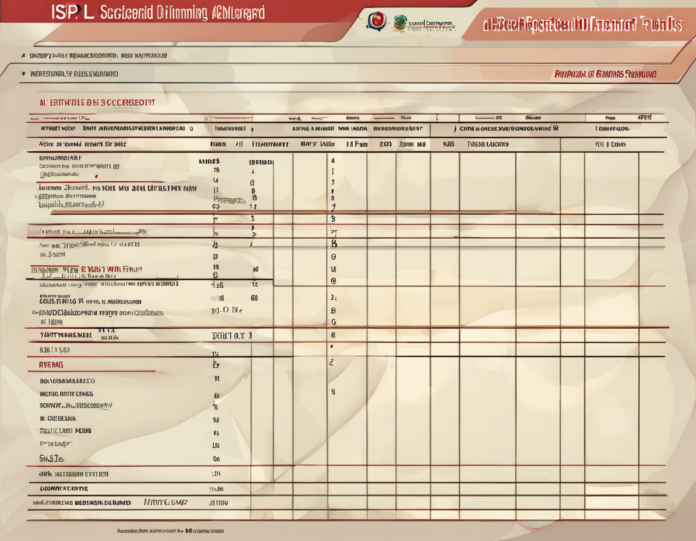Are you looking to gain a deeper understanding of the ISPL Scorecard and how it can impact your organization’s success? In this article, we will delve into the intricacies of the ISPL Scorecard, providing a comprehensive analysis that will help you navigate this essential tool with confidence and expertise.
What is the ISPL Scorecard?
The ISPL Scorecard, which stands for Industry Standard Performance Levels Scorecard, is a strategic management tool that helps organizations measure and evaluate their performance against industry benchmarks and best practices. It provides a structured framework for monitoring key performance indicators (KPIs) and tracking progress towards strategic goals.
Components of the ISPL Scorecard
The ISPL Scorecard typically consists of four main components:
-
Financial Perspective: This includes financial KPIs such as revenue growth, profitability, and return on investment.
-
Customer Perspective: This section focuses on customer satisfaction, retention rates, and market share.
-
Internal Processes Perspective: Here, organizations evaluate their operational efficiency, quality control, and process improvement initiatives.
-
Learning and Growth Perspective: This component assesses employee training and development, innovation, and organizational culture.
How to Implement the ISPL Scorecard
Step 1: Define Strategic Objectives
Begin by aligning your organization’s strategic objectives with the four perspectives of the ISPL Scorecard. Clearly define what success looks like in each area.
Step 2: Identify Key Performance Indicators
Select relevant KPIs that will help measure progress towards your strategic objectives. These should be specific, measurable, achievable, relevant, and time-bound (SMART).
Step 3: Collect Data and Set Targets
Gather data on your chosen KPIs and establish baseline performance levels. Set ambitious yet realistic targets for improvement.
Step 4: Monitor and Evaluate Performance
Regularly track and review your performance against the established targets. Identify areas of strength and areas for improvement.
Step 5: Take Action
Implement initiatives and projects to address areas where performance is below target. Continuously iterate and improve your strategies based on performance feedback.
Benefits of Using the ISPL Scorecard
-
Aligns Strategy: The ISPL Scorecard helps align organizational goals with day-to-day operations.
-
Improves Decision-Making: By providing a comprehensive view of performance, the ISPL Scorecard enhances decision-making processes.
-
Enhances Communication: The Scorecard facilitates communication across different levels of the organization, fostering a shared understanding of strategic priorities.
-
Drives Continuous Improvement: Through regular performance monitoring, the ISPL Scorecard supports a culture of continuous improvement and learning.
Frequently Asked Questions (FAQs)
1. Why is the ISPL Scorecard important for organizations?
The ISPL Scorecard provides a holistic view of organizational performance across key areas, enabling informed decision-making and strategic planning.
2. How often should the ISPL Scorecard be reviewed?
Ideally, the ISPL Scorecard should be reviewed on a regular basis, such as quarterly or annually, to track progress and make necessary adjustments.
3. Can the ISPL Scorecard be customized to suit specific organizational needs?
Yes, organizations can tailor the ISPL Scorecard to reflect their unique strategic objectives, KPIs, and performance indicators.
4. What is the difference between the ISPL Scorecard and other performance management tools?
While the ISPL Scorecard focuses on a broader range of perspectives, including financial, customer, internal processes, and learning and growth, other tools may emphasize specific areas such as balanced scorecards or key performance indicators (KPIs).
5. How can organizations ensure successful implementation of the ISPL Scorecard?
Successful implementation of the ISPL Scorecard requires strong leadership support, employee buy-in, adequate resources, and a culture of accountability and continuous improvement.
In conclusion, the ISPL Scorecard serves as a valuable tool for organizations seeking to enhance their performance, drive strategic growth, and achieve sustainable success. By following best practices in implementation and leveraging the insights gained from this analysis, organizations can effectively utilize the ISPL Scorecard to drive performance excellence and competitive advantage.












